Beneficial Comfort Food: Lion’s Mane Mushroom Risotto Recipe with Fresh Herbs
Delight in the Rich and Creamy Goodness of Lion’s Mane Mushroom Risotto, where Fresh Herbs and Lion’s Mane Mushrooms Create a Unique Taste and Health Benefits.

Disclosure: This article contains affiliate links, which means we may earn a commission if you purchase through these links. The product recommendations are solely based on our genuine opinions and experiences.
Lion’s Mane mushroom takes center stage in this delightful and utterly savory Lion’s Mane Mushroom Risotto Recipe. 🍄✨
This isn’t just any risotto; it’s a creamy, herb-infused masterpiece that can cure all of your mushroom cravings!
Today we are going to skip the Dehydrated Lion’s Mane Powders and the Mushroom Capsules to bring in the fresh earthy charms of Lion’s Mane mushrooms and elevated to gourmet status with the addition of fragrant fresh herbs like rosemary and thyme. 🌿🍚
As you savor each delectable bite, you’ll discover that this dish might offer a secret bonus: potential health benefits from the Lion’s Mane mushroom.
So, you’re not just indulging in a rich and creamy treat; and with the right dosage in every bite you’re treating yourself to a little culinary magic and maybe even some well-deserved goodness for your body. 🌟🍽️
Whether you’re a seasoned chef looking to impress or a curious foodie ready to embark on a culinary escapade, our Lion’s Mane Mushroom Risotto Recipe is here to enchant your senses and elevate your dining experience.

Did Someone Say Rice?
Type of Rice: Traditional Italian risotto is typically made using a short-grain rice variety called Arborio rice.
Arborio rice is known for its high starch content, which gives risotto its creamy texture when cooked. The starchy nature of Arborio rice allows it to absorb liquid slowly and release starch gradually, resulting in a creamy consistency characteristic of a well-made risotto. Other types of short-grain rice, such as Carnaroli and Vialone Nano, are also commonly used in risotto preparation. These rice varieties are similar to
Grab Everything you Need:
Having the right tools and ingredients is essential before starting any cooking task. Here is A list Of Tools You Will need to make this Lion’s Mane Mushroom Risotto Recipe.
- Medium and large saucepan: Choose a heavy-bottomed saucepan to ensure even heat distribution and prevent the rice from sticking or burning.
- Wooden spoon or spatula: Use a wooden spoon or spatula for stirring the risotto, as it won’t damage the rice grains and will help release starch for creaminess.
- Ladle: A ladle will be helpful for adding hot
Vegetable broth or stock to the risotto gradually. - Chef’s knife and cutting board: If you need to chop any ingredients like onions, garlic, vegetables, or herbs, you’ll need a sharp knife and a cutting board.
- Measuring cups and spoons: For precise measurements of rice, liquid, and other ingredients.
- Stock or broth: Prepare your stock or broth before starting to cook the risotto. It’s recommended to use a flavorful vegetable but you can substitute with Chicken Broth.
- White wine: White wine adds extra flavor. If you want to use wine, please make sure it’s dry and have it ready.
- Grated Parmesan cheese : Parmesan cheese is often used in risotto for additional creaminess and flavor.
- Butter : Adding Butter at the end will enhance the richness of the dish.
- Serving dish: Have a warm serving dish ready to plate the finished risotto.
By preparing your tools and ingredients beforehand, you can focus on the cooking process without interruptions, ensuring a smooth and enjoyable risotto-making experience.
What Type of White Wine To Use?
It is best to use a dry white wine with good acidity and flavor for Lion’s Mane Risotto. Dry white wines work well because they add depth and complexity to the dish without adding much sweetness. The wine should complement the other ingredients in the risotto and enhance the overall flavor.
Common types of dry white wines suitable for risotto include:
- Pinot Grigio: This light and crisp wine with hints of citrus and apple flavors is a popular choice for risotto due to its refreshing acidity.
- Chardonnay: Look for unoaked or lightly oaked Chardonnay to avoid overpowering the delicate flavors of the risotto.
- Sauvignon Blanc: Known for its herbal and grassy notes, Sauvignon Blanc can add a unique character to the risotto.
- Vermentino: A Mediterranean white wine with bright acidity and flavors of citrus and stone fruits.
- Gavi: Also known as Cortese, Gavi is an Italian white wine with floral and mineral notes, perfect for Italian risotto dishes.
Using a wine you enjoy drinking is Essential since its flavors will be concentrated in the risotto. Additionally, if you prefer to cook without alcohol, you can substitute the wine with a splash of lemon juice or extra broth, although the flavor profile will differ slightly.
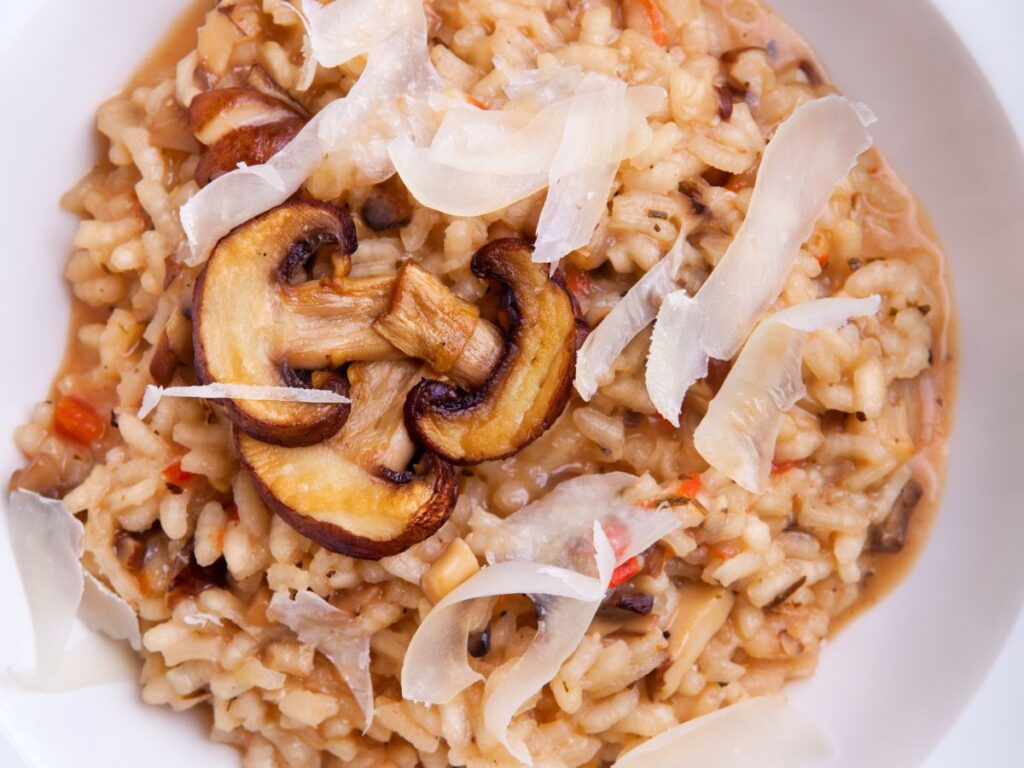
What Exactly are Lion’s Mane Mushrooms?
Lion’s Mane mushrooms (Hericium erinaceus) are unique and distinctive-looking fungi with a taste and texture often likened to seafood, particularly lobster or crab. They are an edible and medicinal mushroom that is gaining popularity in culinary and wellness circles whether its for savory dishes like risotto or a Lion’s Mane Mushroom Tea for an Afternoon Pick me Up.
- Appearance: Lion’s Mane mushrooms are characterized by their shaggy, cascading appearance, which somewhat resembles a lion’s mane, hence their name. The mature mushrooms have long, cascading, white or cream-colored spines.
- Flavor and Texture: When cooked, Lion’s Mane mushrooms have a mild, sweet, and slightly nutty flavor. Their texture is often described as tender and meaty, similar to shellfish. This unique combination of flavor and texture makes them a sought-after ingredient for vegetarian and seafood dishes.
- Nutritional Profile: Lion’s Mane mushrooms are a good source of various nutrients and bioactive compounds. They are low in calories, fat-free, and provide a modest amount of protein. They are also rich in antioxidants, fiber, and vitamins and minerals.
- Potential Health Benefits: Lion’s Mane mushrooms have gained attention for their potential health benefits. Some studies suggest they support cognitive health by promoting nerve growth factor (NGF) production in the brain. Additionally, they may have anti-inflammatory and antioxidant properties.
- Culinary Uses: Lion’s Mane mushrooms are versatile in the kitchen. They can be sliced and sautéed, grilled, roasted, or used in stir-fries. Due to their seafood-like taste, they are often used as a vegan or vegetarian alternative in dishes that traditionally contain shellfish, such as crab cakes or lobster bisque.
- Medicinal Uses: In traditional medicine, Lion’s Mane mushrooms have been used for various purposes, including enhancing memory and cognitive function, as well as supporting the digestive system. While research on these potential benefits is ongoing, they are being studied for their potential therapeutic applications.
- Availability: Lion’s Mane mushrooms are fresh, dried, or in supplement form. They can be found in specialty grocery stores, farmers’ markets, and online retailers.
Overall, Lion’s Mane mushrooms are celebrated for their culinary versatility,Lion’s Mane mushrooms are celebrated for their culinary versatility, unique flavor, and potential contributions to health and well-being. Whether you’re a gourmet chef or a health-conscious consumer, Lion’s Mane mushrooms offer an exciting and nutritious addition to your diet.
How to Properly Clean Lion’s Mane Mushrooms?

Cleaning Lion’s Mane mushrooms (Hericium erinaceus) is a crucial step in preparing them for cooking. These mushrooms can trap debris and dirt in their intricate, shaggy spines, so it’s essential to clean them properly. Here’s how to do it:
Materials Needed:
- Lion’s Mane mushrooms
- A sharp knife
- A clean, damp paper towel or a soft-bristle brush
- A cutting board
Steps to Clean Lion’s Mane Mushrooms:
- Inspect the Mushrooms: Examine the Lion’s Mane mushrooms for any visible dirt, debris, or discolorations. If you see any damaged or discolored areas, trim them away with a sharp knife. It’s essential to start with fresh, healthy mushrooms.
- Trim the Base: Cut off the very bottom of the Lion’s Mane mushroom cluster, where it was attached to the tree or substrate. This part can be tough and woody, so it’s best to discard it.
- Use a Damp Paper Towel or Brush: Gently wipe the spines and surfaces of the mushrooms with a clean, damp paper towel or a soft-bristle brush. Avoid using too much water, as Lion’s Mane mushrooms are highly absorbent and can become soggy if soaked.
- Inspect for Hidden Debris: Pay special attention to the spaces between the spines. Debris can sometimes get trapped there. Use the brush or paper towel to reach into these areas and remove any remaining dirt or particles.
- Final Check: Once you’ve wiped the mushrooms clean, do a final visual check to ensure there are no remaining dirt or debris. The mushrooms should appear clean and pristine.
- Slice or Cook Whole: Now, your Lion’s Mane mushrooms are ready to be sliced or used whole in your recipe. Depending on your dish, you can cut them into slices, cubes, or leave them whole for a striking presentation.
Remember that Lion’s Mane mushrooms are known for their unique appearance and texture, so handle them gently to maintain their quality. Cleaning them properly ensures that you’ll enjoy their delightful flavor and meaty texture in your culinary creations.

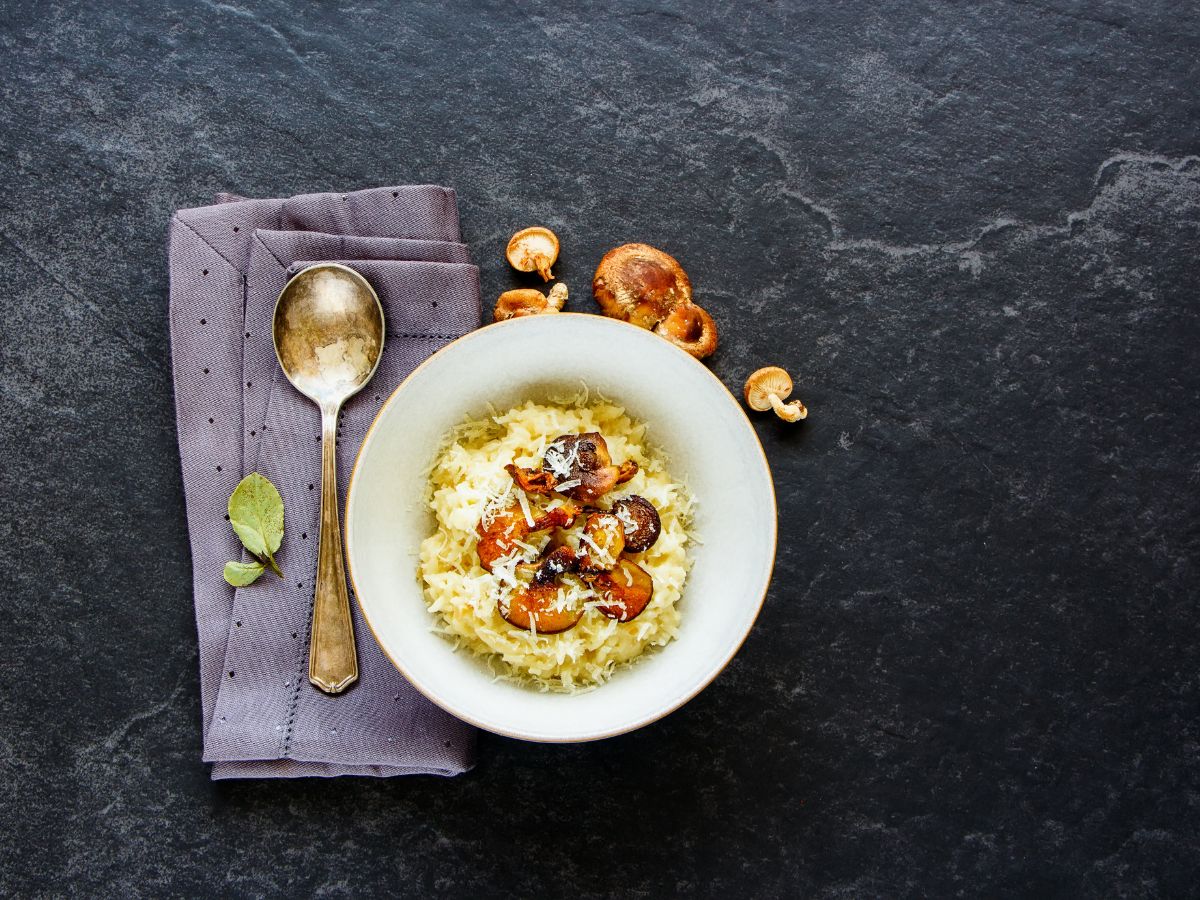
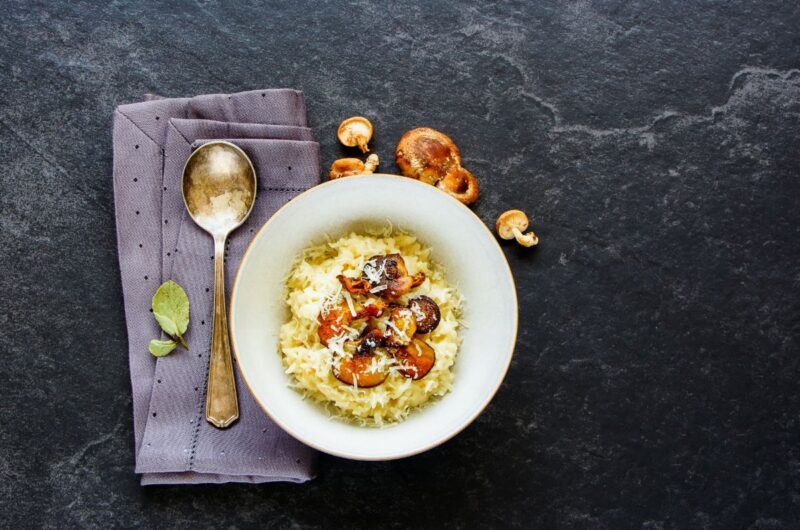


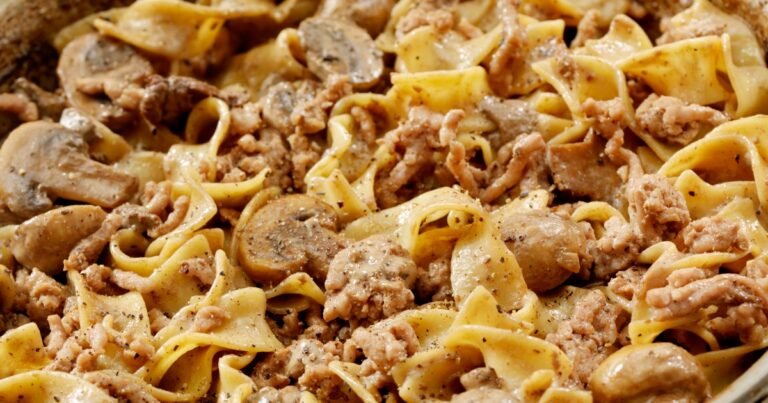


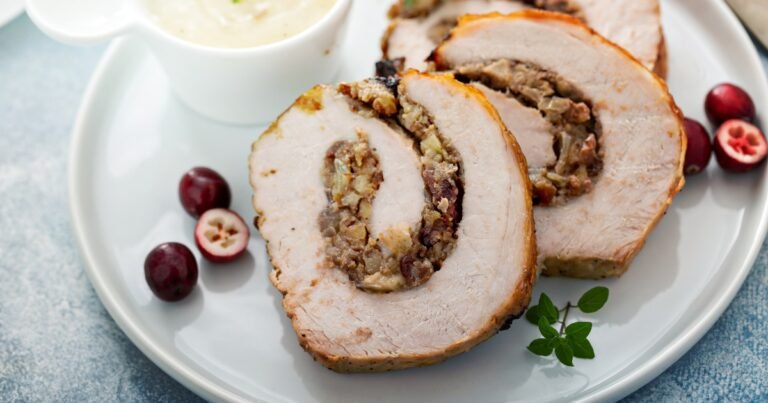

Hi my friend! I wish to say that this article is awesome,
nice written and come with approximately all significant infos.
I’d like to see more posts like this .
It’s a shame you don’t have a donate button! I’d definitely donate to this brilliant blog!
I suppose for now i’ll settle for book-marking and
adding your RSS feed to my Google account. I look forward to new updates and will talk about this website with my
Facebook group. Chat soon!